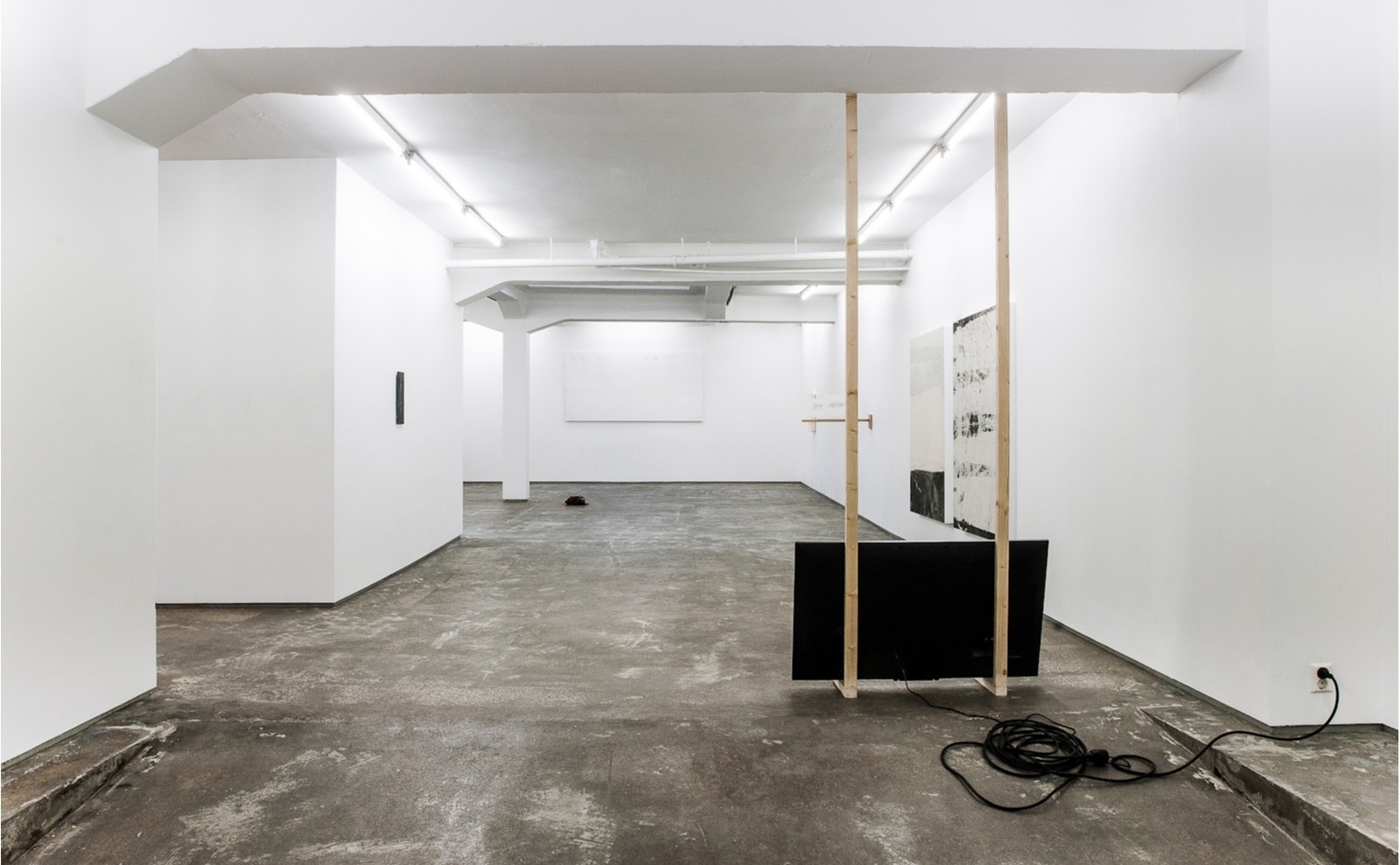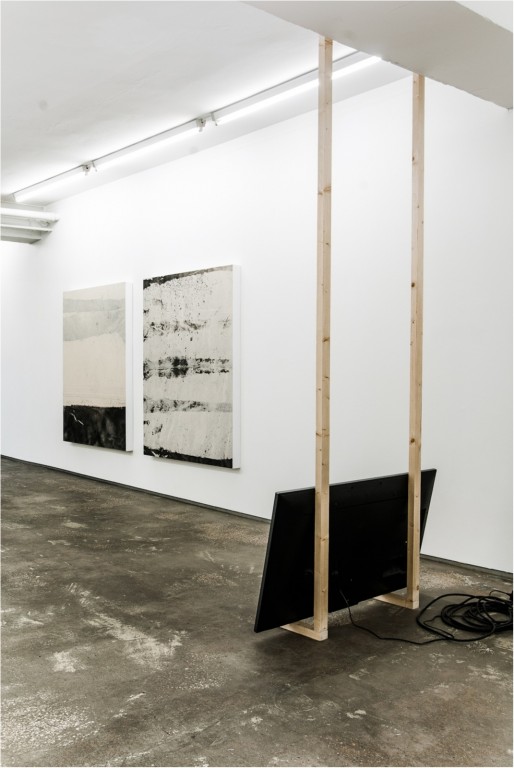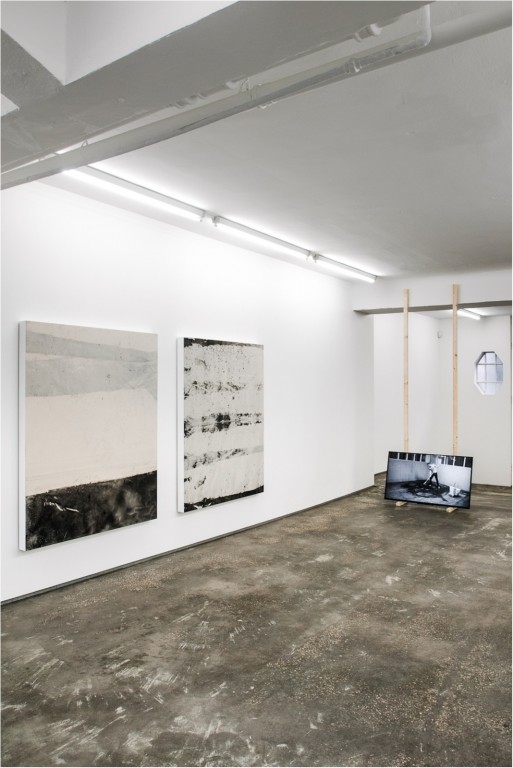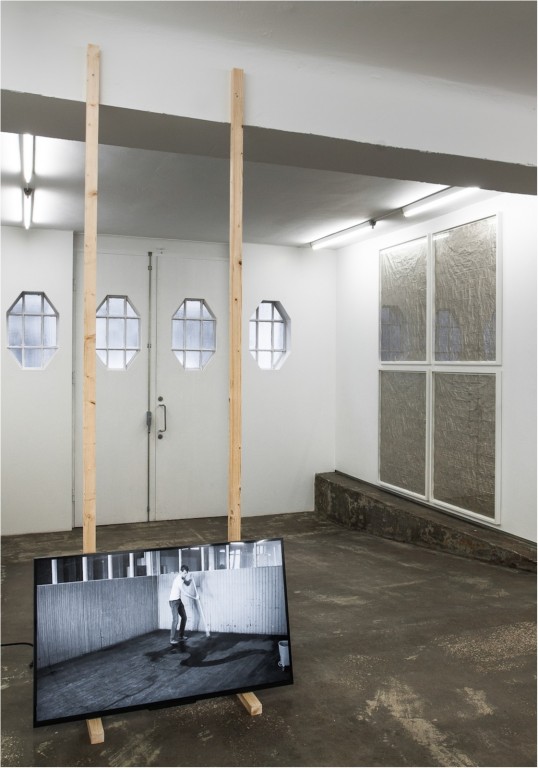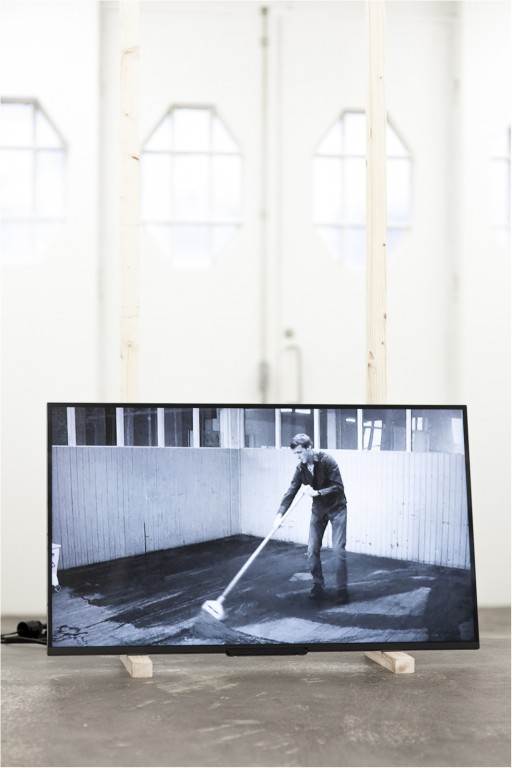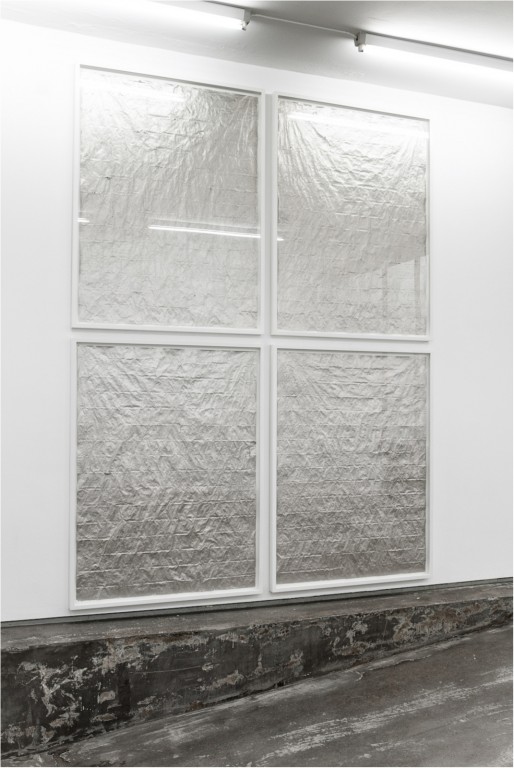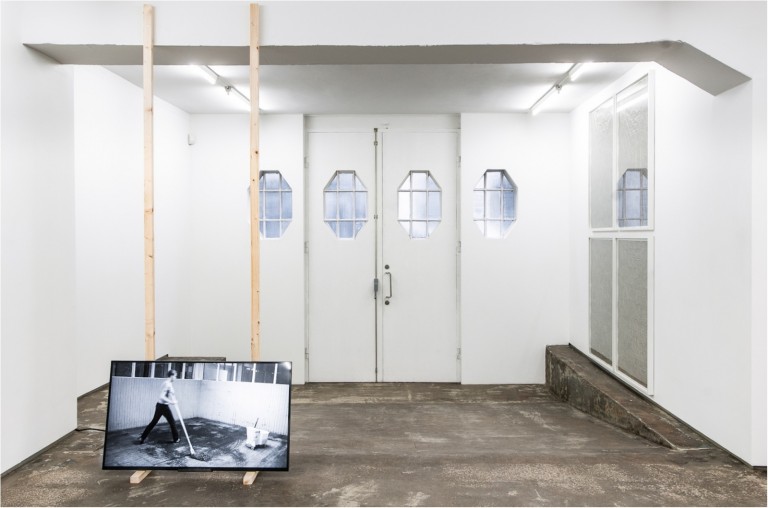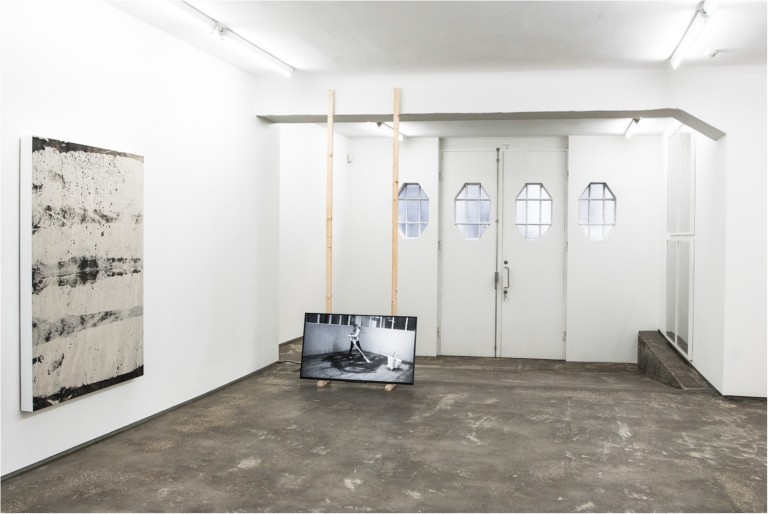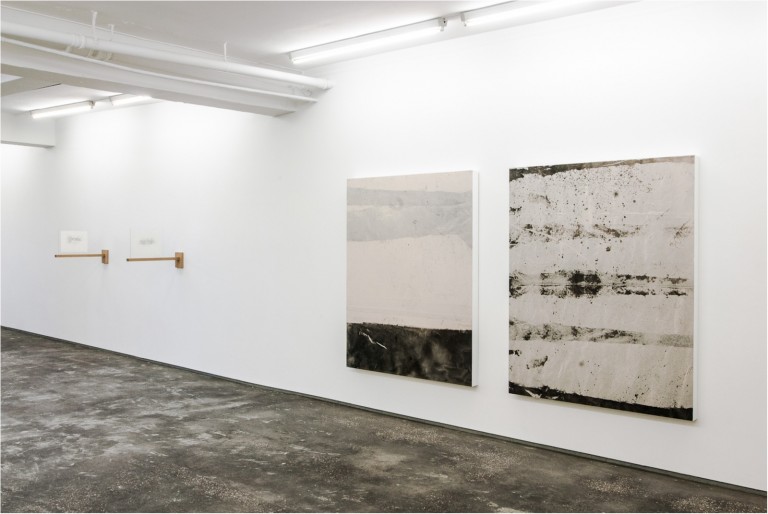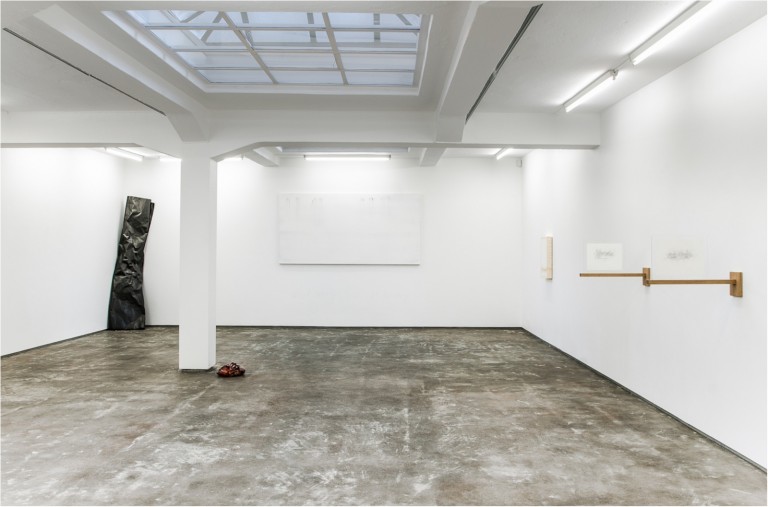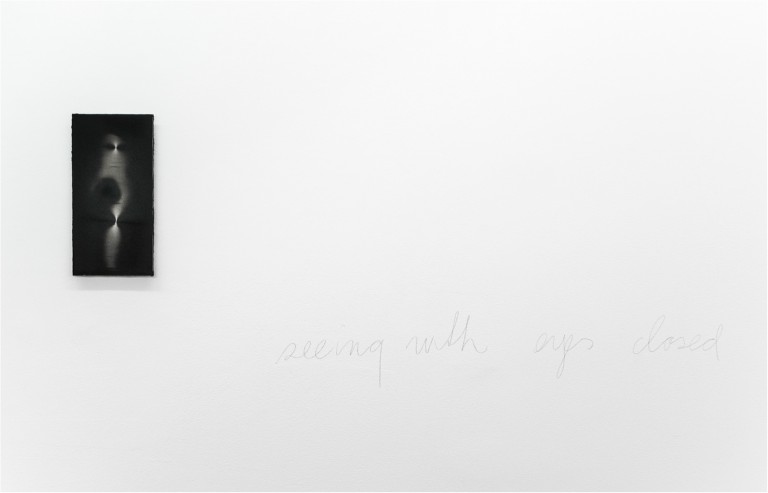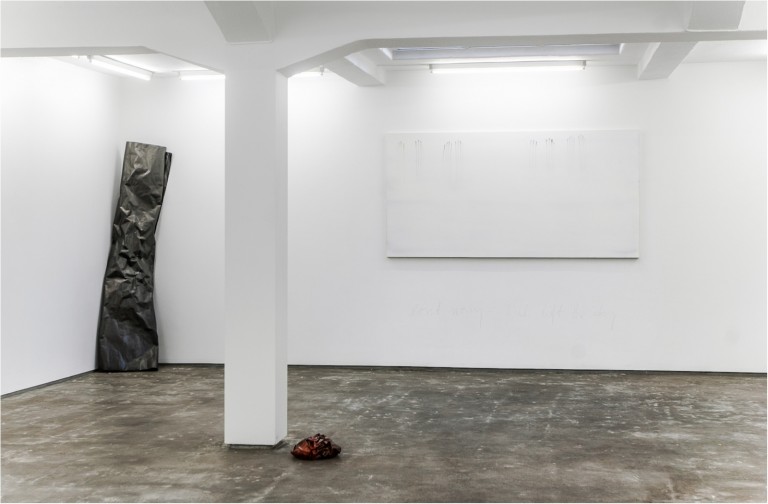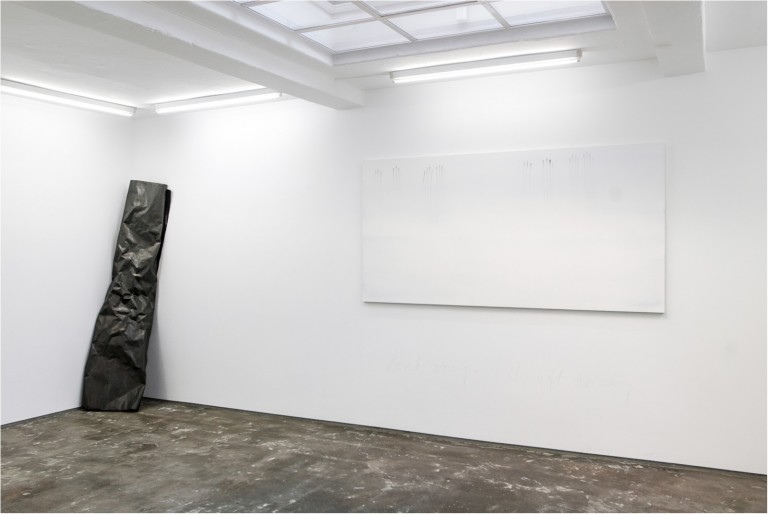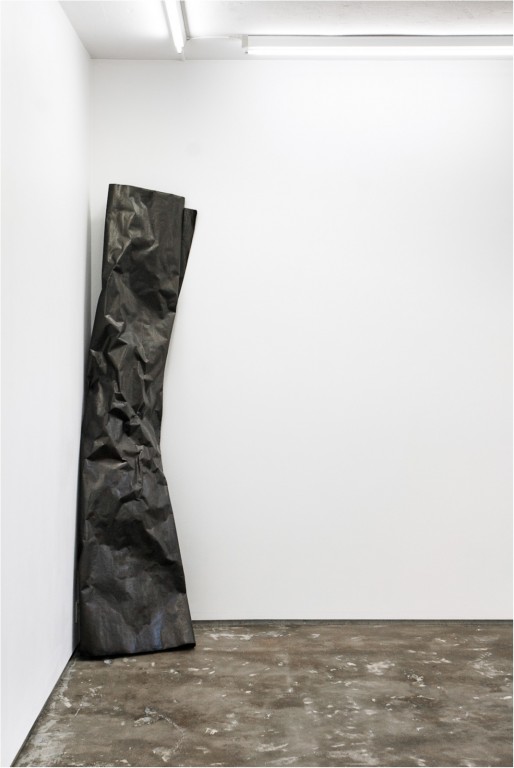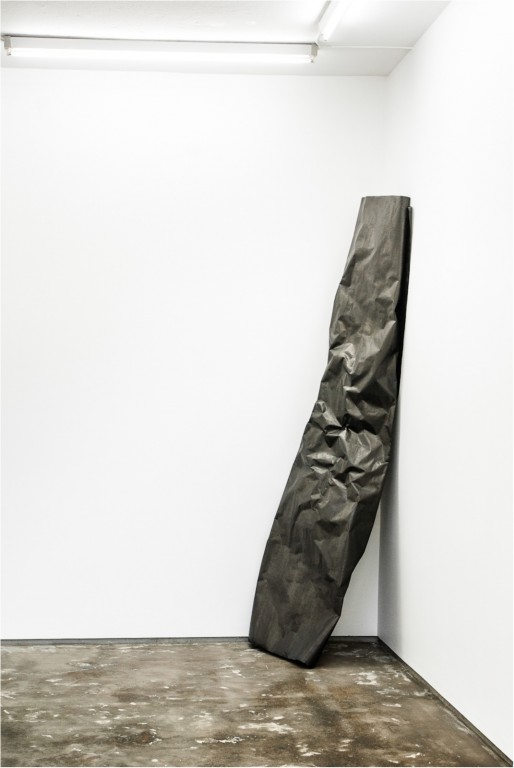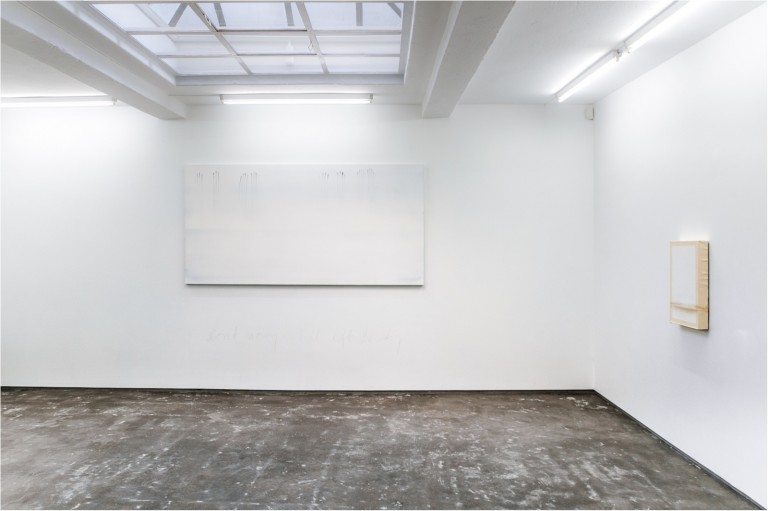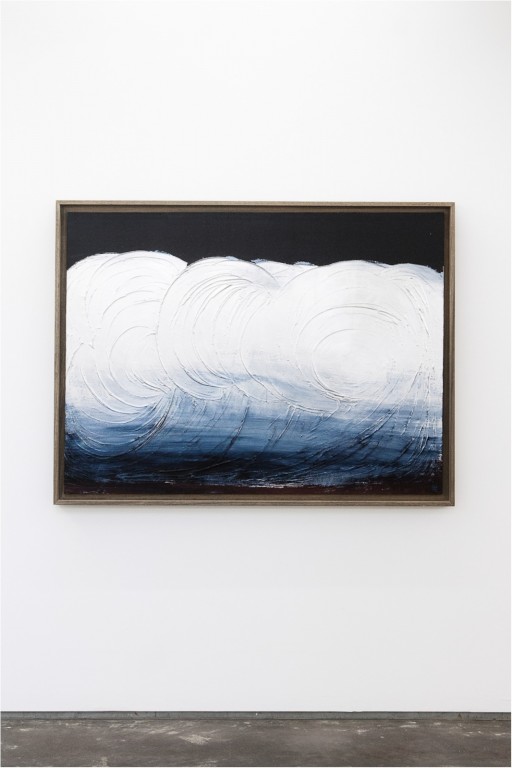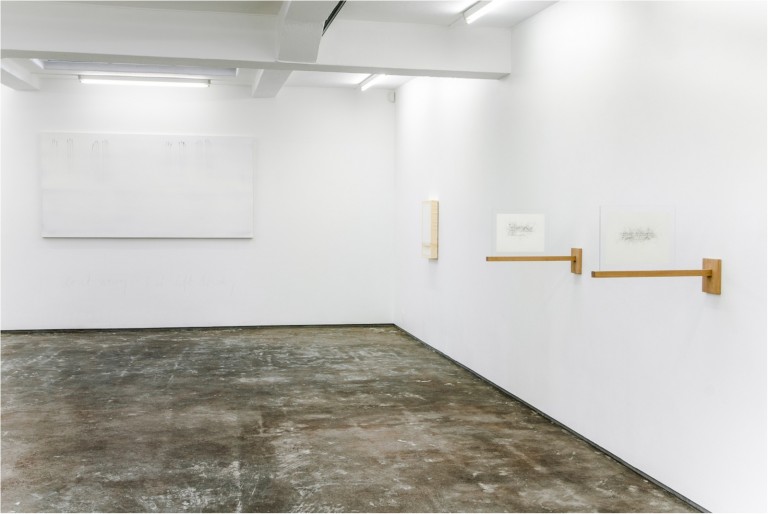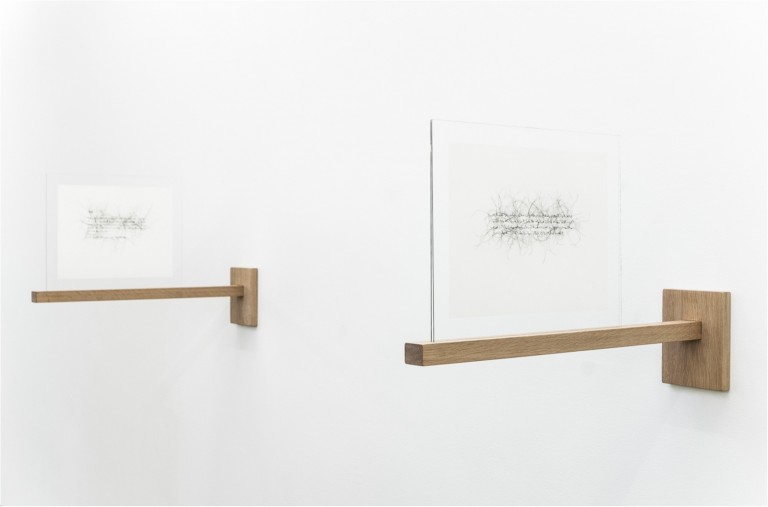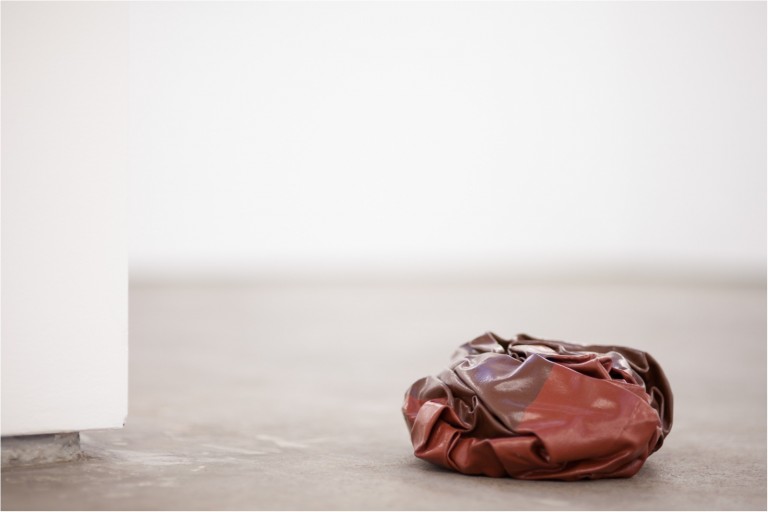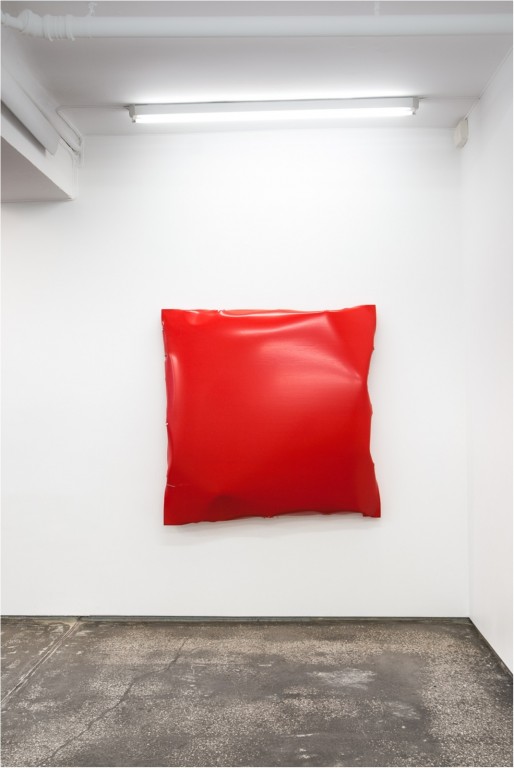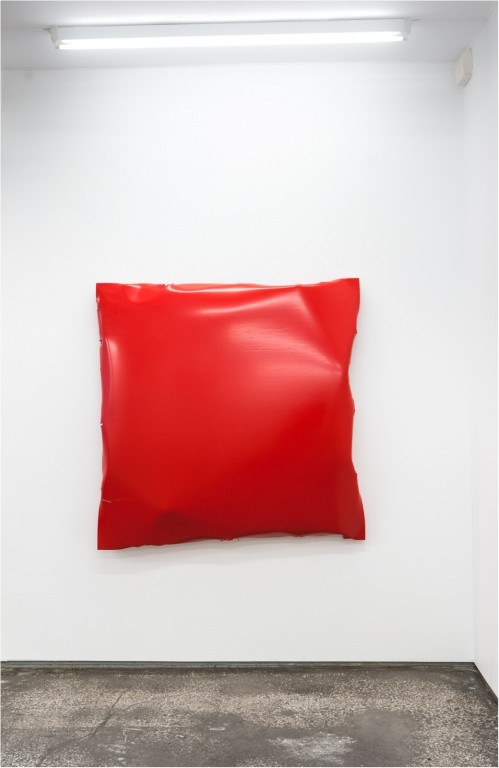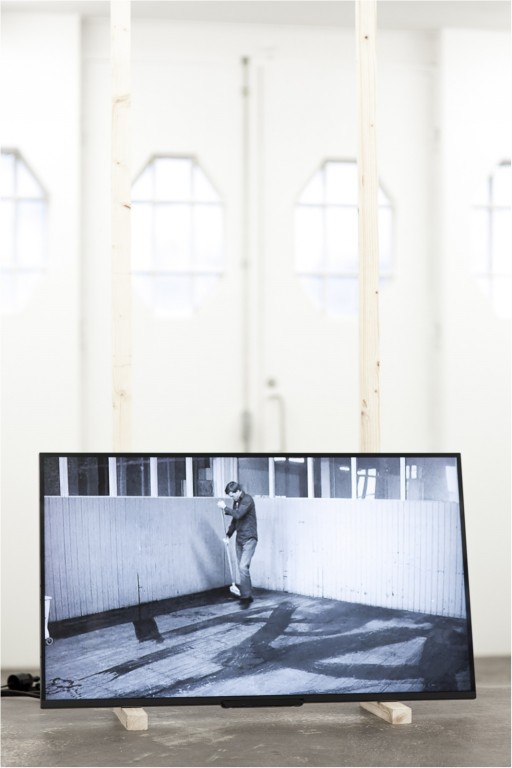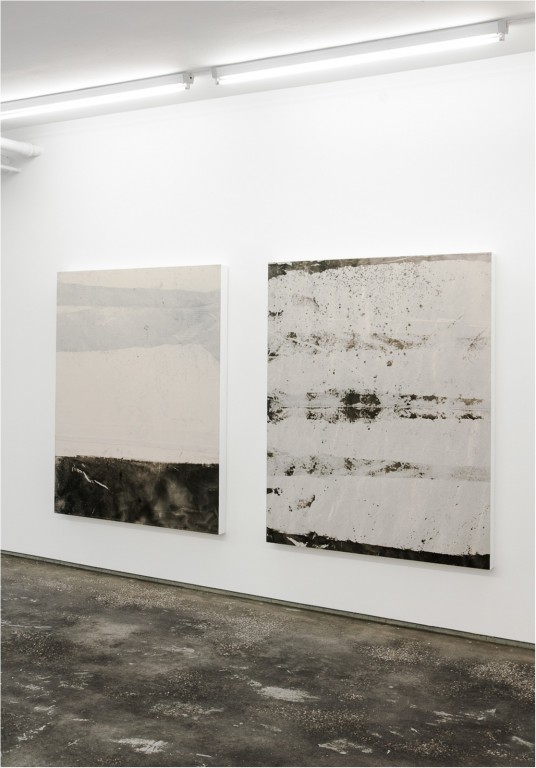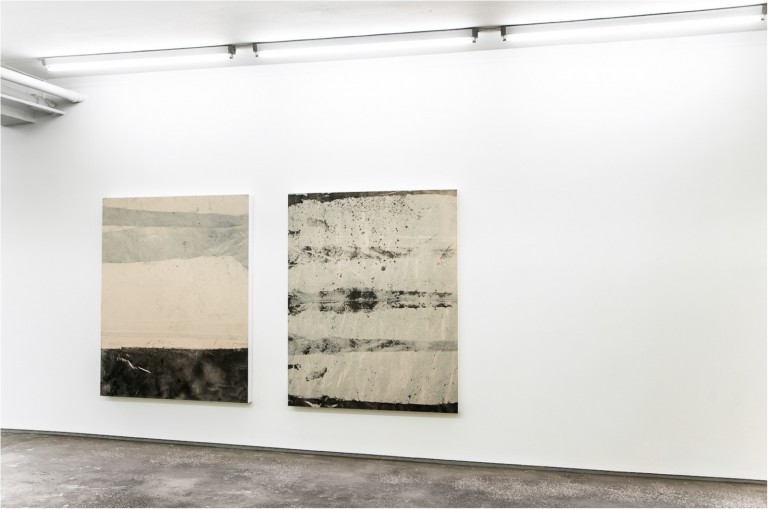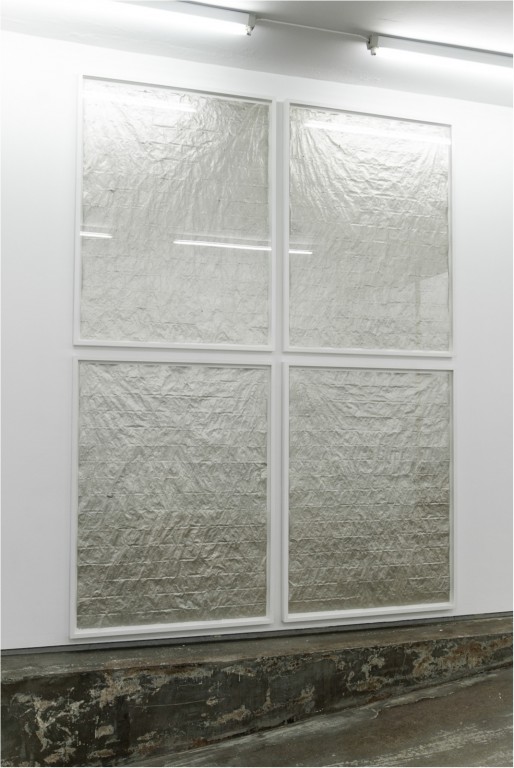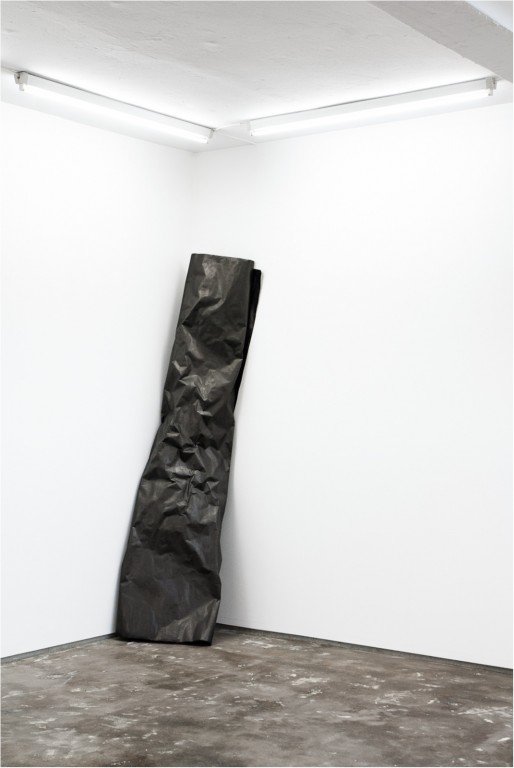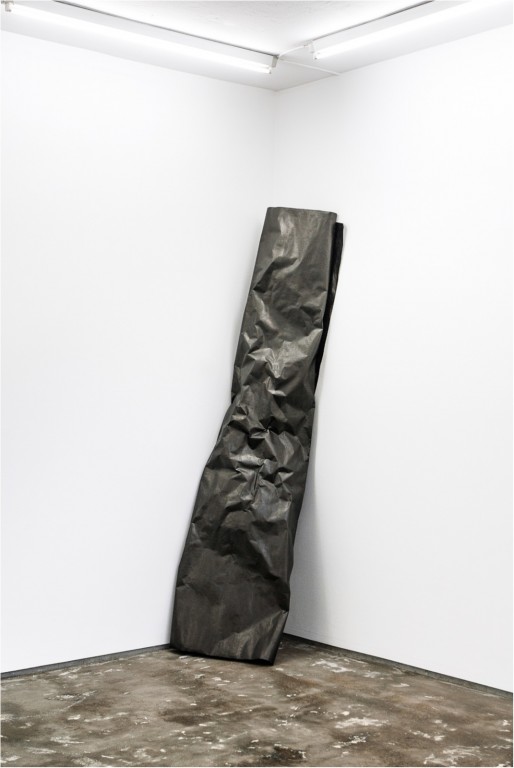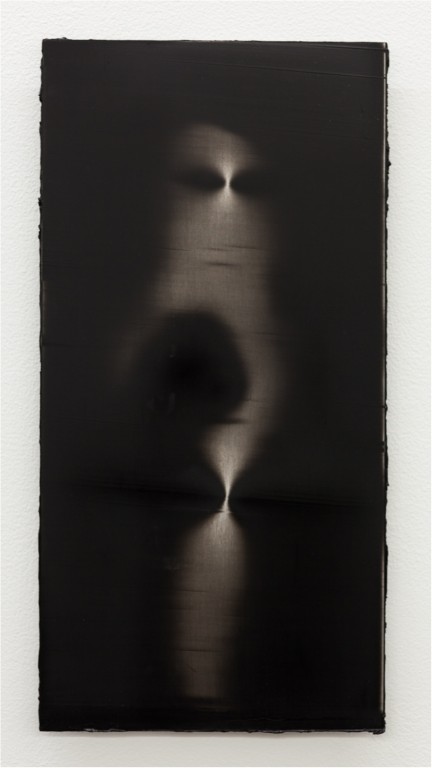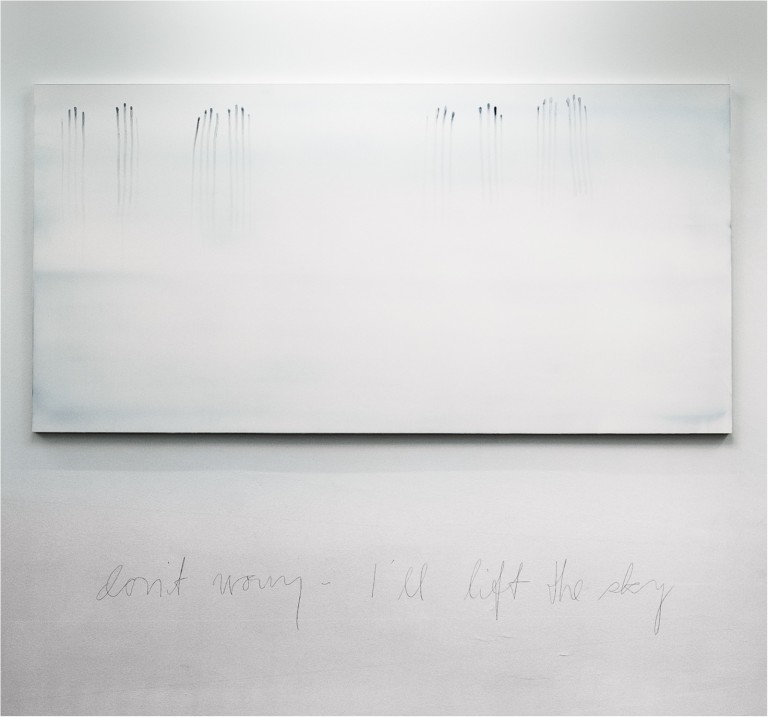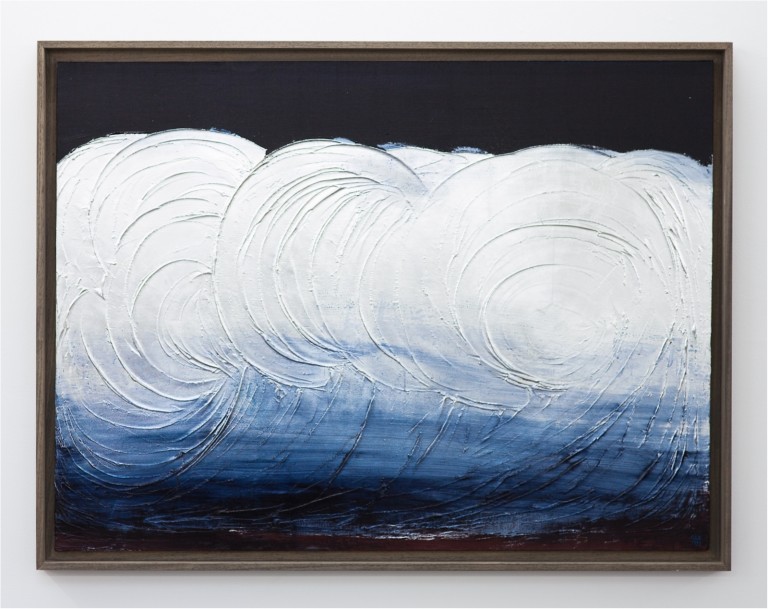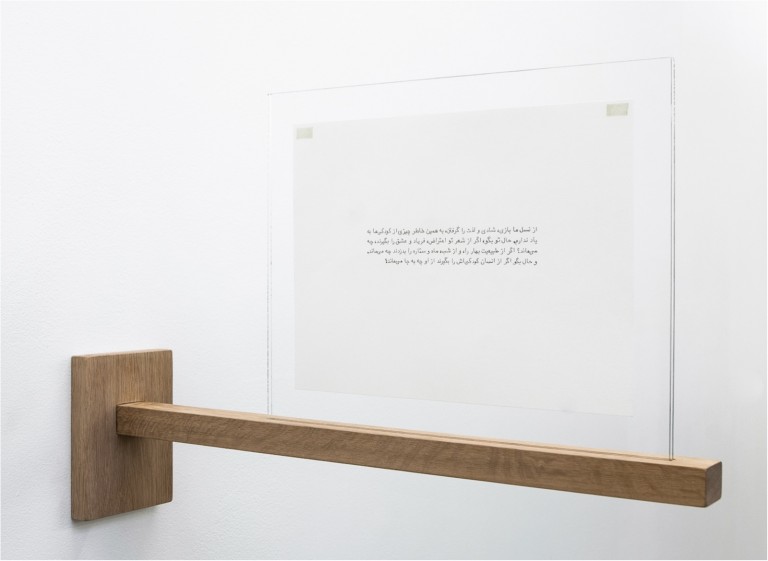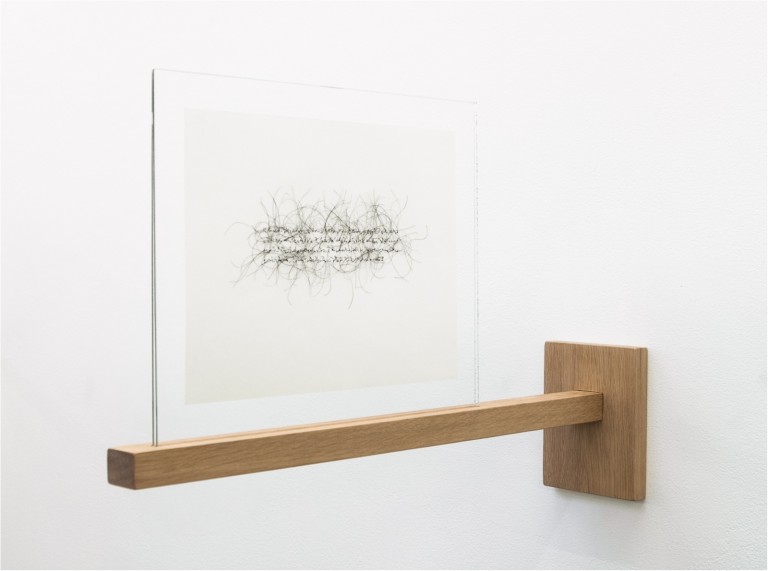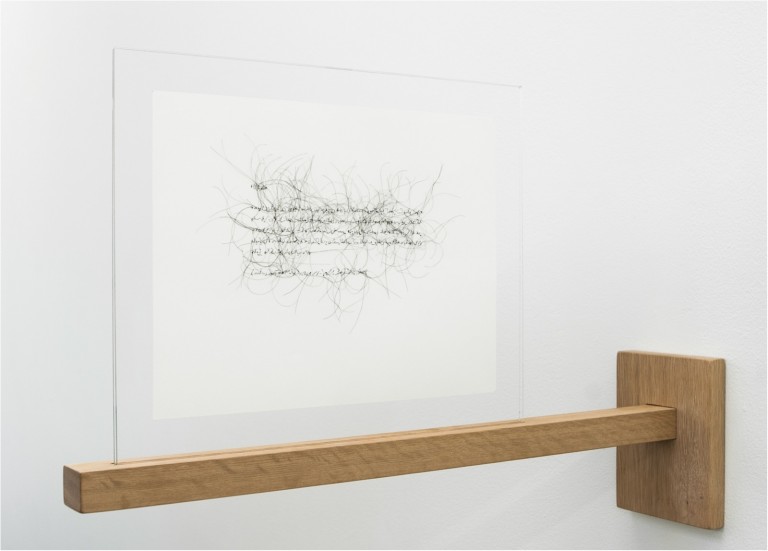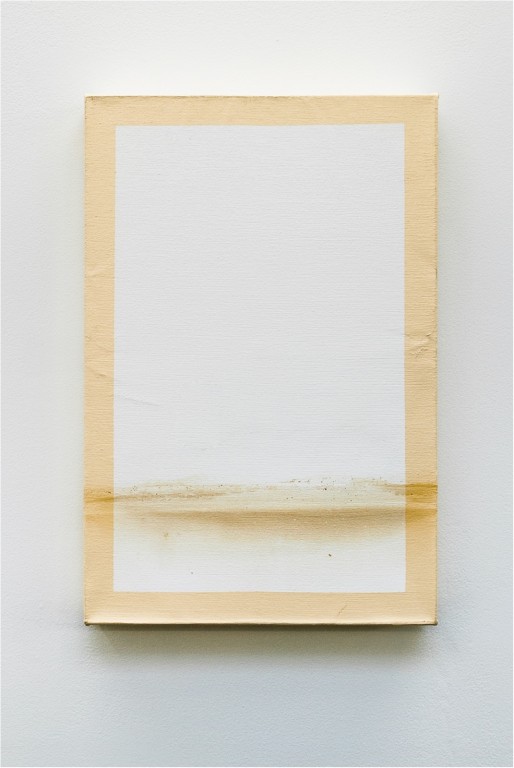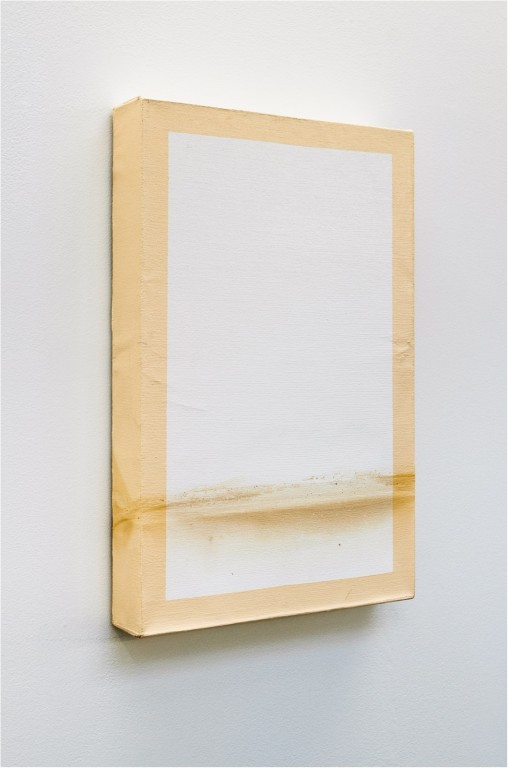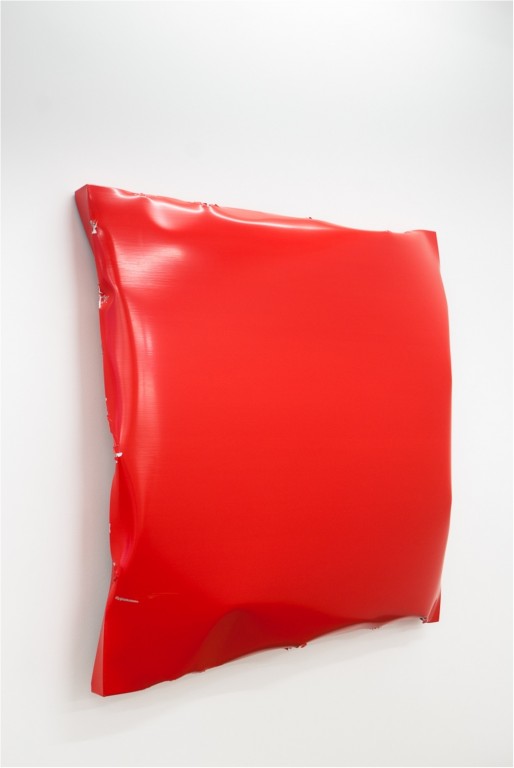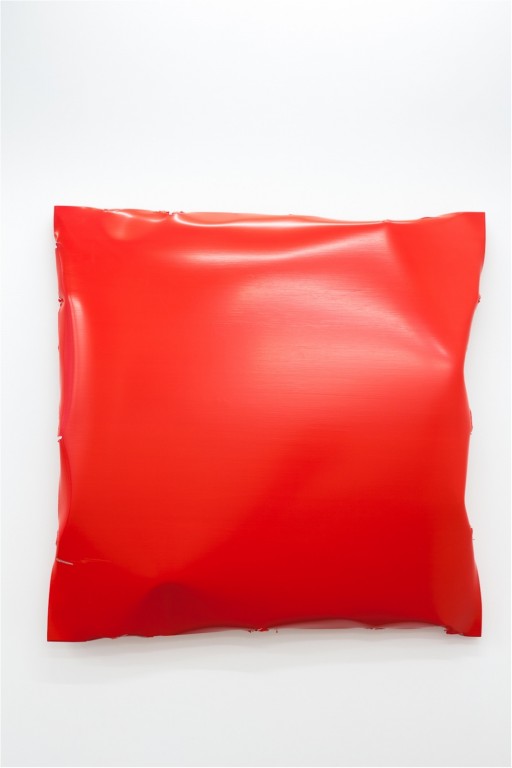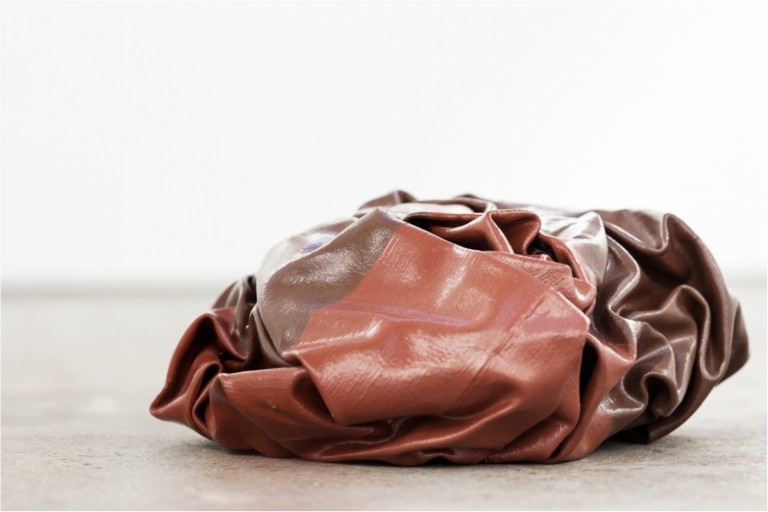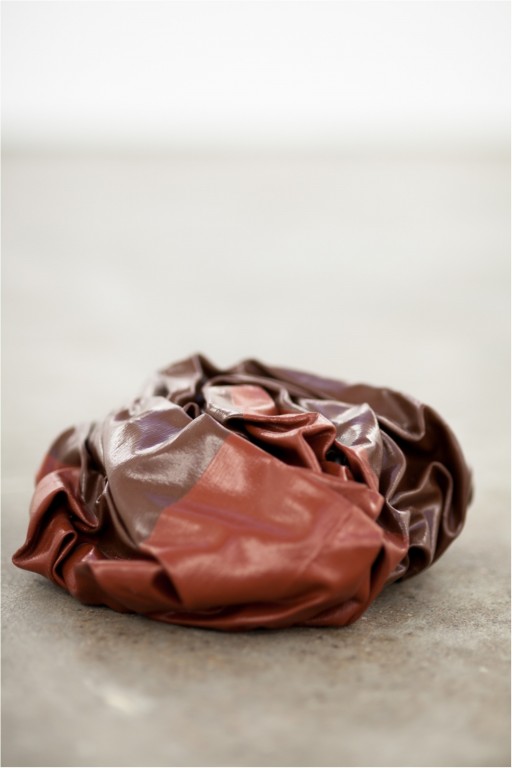using a hammer and sea-staring is OK
OSL contemporary is proud to present an exhibition curated in collaboration with A K Dolven. The show comprises works by Anna Barriball , Angela de la Cruz , Sam Moyer, John Henderson, Gelawesh Waledkhani, Anna-Eva Bergmann and A K Dolven.
The term abstraction is inherently flexible. It refers to the process of deriving concepts from the literal or "real", and to that which has no substance. But it also points to the concrete object, text or performance embedded with abstract connotations. In our endeavours to make sense of the world, to communicate and to impose meaning, we are constantly abstracting – whether speaking, dressing, praying or playing. The works in this show highlight the diverse deliberations involved in the performative abstraction situated at the core of all artistic production.
Alluding to conditions associated with human vulnerability, concepts and feelings, Angela de la Cruz brings an air of mortality to her material. The beaten and sullied pieces invoke empathy in ways that effectively demonstrate our ability to derive emotional content from evocative constructs.
In John Henderson's video "Cleanings" (2010) the mundane task of floor-mopping amounts to a dance, mimicking the bold gestures of an artist performing in his studio, not without an element of comical relief. While referencing the famous footage of Jackson Pollock painting on a floor-splayed canvas, Henderson's strokes in water dry up quickly; the object-hood of his "painting" evaporates, and abstracted from the artistic practice is the performance itself.
Sam Moyer renders two-dimensional imprints of the performance of nature on her ink-dyed canvases. Exposed to environmental conditions, her wall-sculptures record the particularities of a specific time and place, and the finished work testify to a process of interaction between natural forces and her personal undertakings in the transmutation of vastness to a flat surface.
Physical imprints and transformative action are also principal aspects in the works of Gelawesh Waledkhani, Anna Barriball and A K Dolven. Waledkhani uses strands of her own hair as threads in the embroidery of political texts. By abstracting pieces from a bodily "self" and weaving them onto paper, she materially becomes part of the artwork in a practice that invokes strategies of psychological transferal and sublimation.
Anna Barriball's drawings blur the lines between sculpture, performance and documentation. In "Untitled II" (2008) a large sheet of paper covered in ink has been wrapped around the artist's body, the empty roll now echoing her shape. In "Mirror Window Wall III" (2008) four framed silver sheets are arranged to resemble a window. There is however no view beyond or through the shimmering bulky outlines of brick wall, obsessively traced with a silver pen to the point of complete encapsulation. The drawings become something of a barrier, disguising as much as indexing the character of its origins. The visible signs of strenuous labour also provide an account of the process itself.
Similarly A K Dolven imposes the action of her own body onto her aluminium plates, whether by using a hammer, or, as in "don't worry - I'll lift the sky" (2013), – by physically lifting the paint with her bare hands, reaching as far as she can. Poetically twisting language and repositioning expected points of view, her practice demonstrates an ability to mentally transgress the apparently given limitations of what "is". Something is abstracted in the process; something comes into being which was not.
Anna Eva Bergmann (1909-1987) has been celebrated for her innovative techniques and for her often minimal and expressionist interpretations of a Nordic landscape. Her practice however, also incorporates investigations into surrealism and symbolism, as well as caricatures with political overtones. Viewed today, 40 years after its completion, the work "Vague baroque" (1973) testifies to a boldness of movement and form that might suggest different associations and readings than those invoked when it was first presented.
Never separated from the performative aspects of execution, presentation or interpretation, abstraction is always entrenched in context. An art piece continues to perform by and of itself within the space and time it occupies. As such, the work of art, as well as the art-space, function as catalysts for this basic human practice, isolating and continuously recycling performative acts of abstraction.
